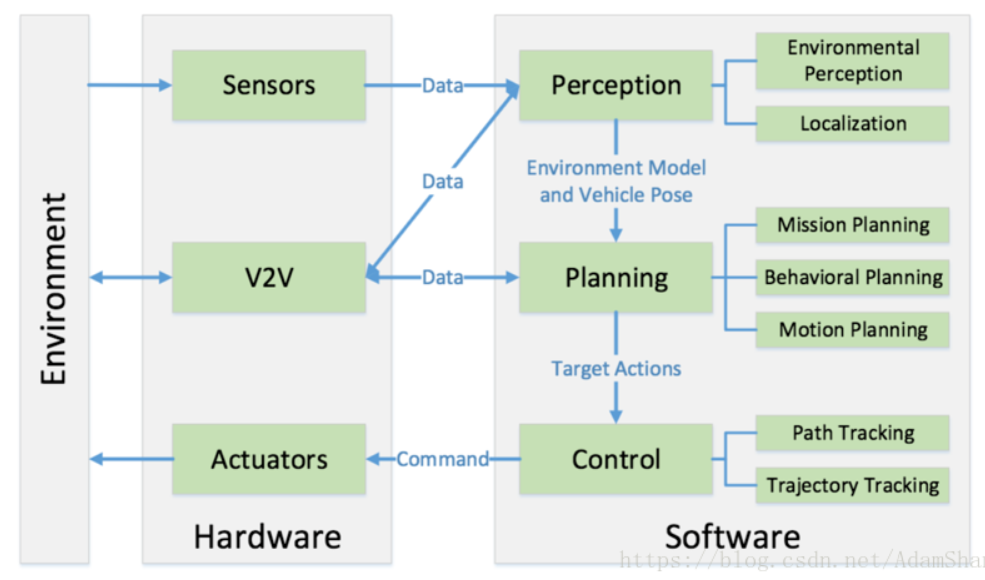路径规划算法

BFS 广度优先遍历
广度优先遍历与最短路径 | 菜鸟教程 (runoob.com)
5.1 Graph Traversals - BFS & DFS -Breadth First Search and Depth First Search - YouTube
Dijkstra 算法
3.6 Dijkstra Algorithm - Single Source Shortest Path - Greedy Method - YouTube
A*
Introduction to the A* Algorithm (redblobgames.com)
D*
LPA*
D* lite
RRT 快速随机探索树
RRT与RRT算法具体步骤与程序详解(python)_问题很多de流星的博客-CSDN博客_rrt算法
Rapidly-exploring random tree - Wikipedia
图示算法
算法步骤
- 初始化整个空间,定义初始点
qinit、终点qend、采样点数number of vertices in RRTK 、点与点之间的步长incremental distance Δq等信息 - 在空间中随机产生一个点
qrand - 在已知树的点集合中找到距离这个随机点最近的点
qnear - 在
qnear到qrand的直线方向上从qnear以步长Δq截取点qnew - 判断从
qnear到qnew之间是否存在障碍物,若存在则舍弃该点 - 将
qnew点加入到树集合中 - 循环2~6,循环结束条件:有一个new点在终点的设定邻域内或生长树达到要求长度
伪代码
Algorithm BuildRRT
Input: Initial configuration qinit, number of vertices in RRT K, incremental distance Δq
Output: RRT graph G
G.init(qinit)
for k = 1 to K do //while 1
qrand ← RAND_CONF()
qnear ← NEAREST_VERTEX(qrand, G)
qnew ← NEW_CONF(qnear, qrand, Δq)
G.add_vertex(qnew)
G.add_edge(qnear, qnew)
return G // if qnew near qend break
- "←" denotes assignment. For instance, "largest ← item" means that the value of largest changes to the value of item.
- "return" terminates the algorithm and outputs the following value.
In the algorithm above, "RAND_CONF" grabs a random configuration q**rand in C. This may be replaced with a function "RAND_FREE_CONF" that uses samples in C**free, while rejecting those in C**obs using some collision detection algorithm.
"NEAREST_VERTEX" is a function that runs through all vertices v in graph G, calculates the distance between q**rand and v using some measurement function thereby returning the nearest vertex.
"NEW_CONF" selects a new configuration q**new by moving an incremental distance Δq from q**near in the direction of q**rand. (According to [4] in holonomic problems, this should be omitted and q**rand used instead of q**new.)
代码示例
RRT*
(31条消息) 【规划】RRT算法图解_笑扬轩逸的博客-CSDN博客_rrt算法